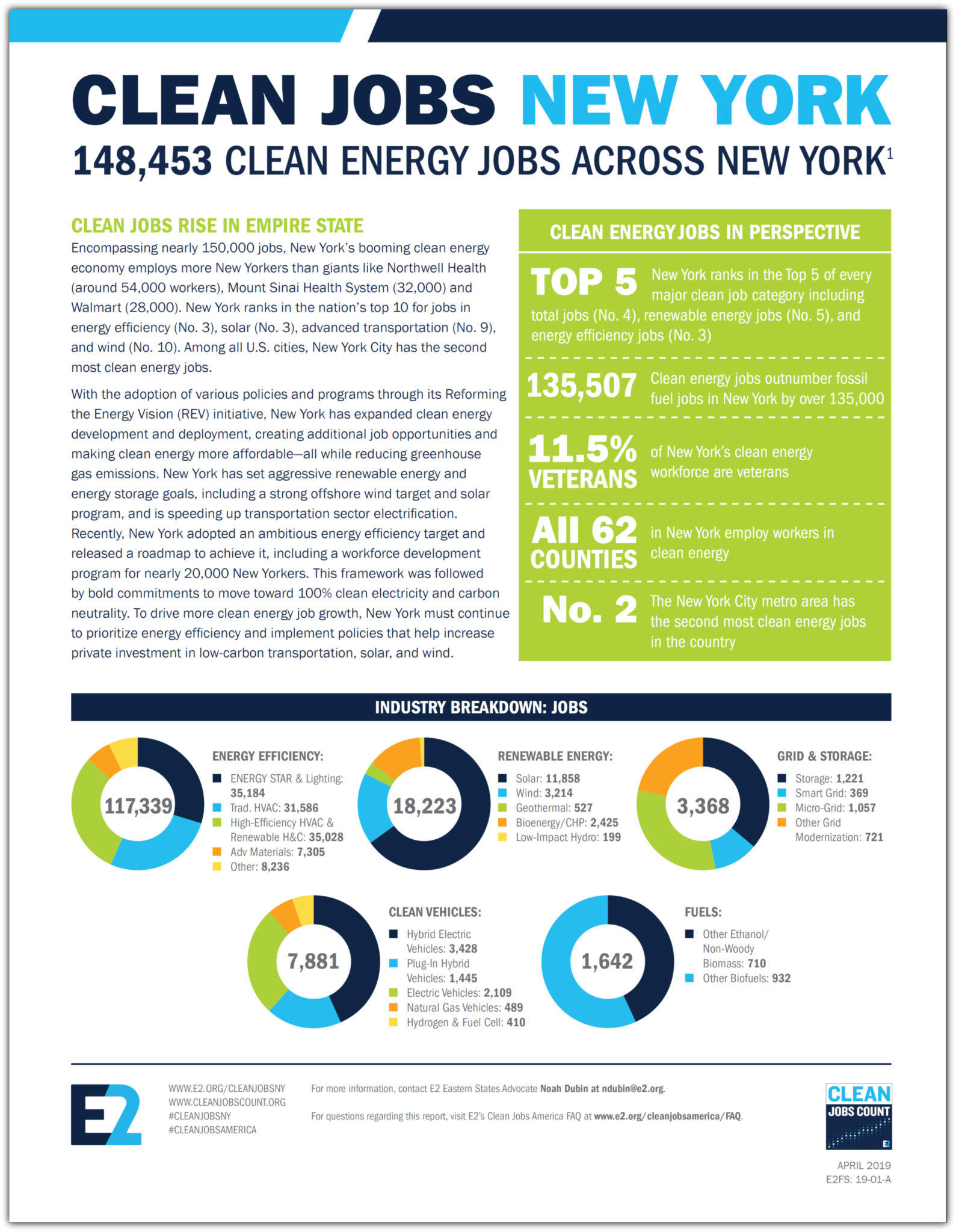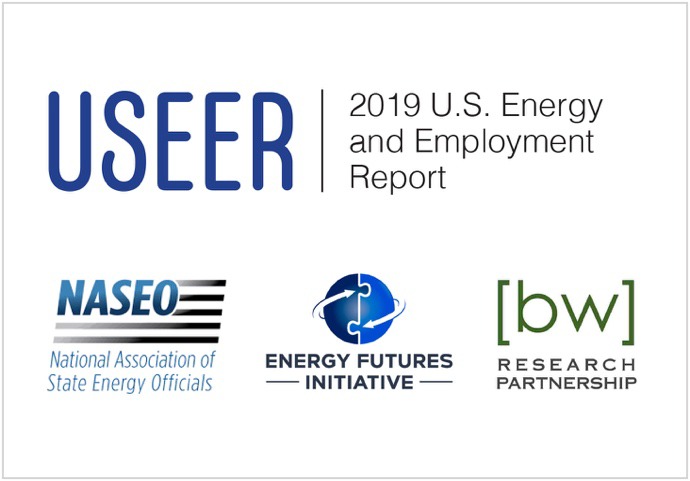
Clean Jobs Rise in the Empire State
Encompassing nearly 150,000 jobs, New York’s booming clean energy economy employs more New Yorkers than giants like Northwell Health (around 54,000 workers), Mount Sinai Health System (32,000) and Walmart (28,000).
According to the 2019 Clean Jobs New York analysis (downloadable PDF) of energy jobs data by the national nonpartisan business group E2 (Environmental Entrepreneurs), New York’s clean energy economy now ranks in the nation’s top 10 for jobs in energy efficiency (No. 3), solar (No. 3), advanced transportation (No. 9), and wind (No. 10).
While New York City has the second most clean energy jobs in the U.S. with more than 96,000, behind only Los Angeles, clean energy’s impact reaches far beyond New York’s major metropolitan areas. One out of every seven clean energy workers are employed counties with population below 300,000 while 9,500 jobs are in the state’s rural areas.
NEW YORK JOB SECTOR TOPLINES
- Energy Efficiency – 117,339 jobs
- Renewable Energy – 18,223 jobs
- Energy Storage – 1,221 jobs
- Solar Energy – 11,858 jobs
- Clean Vehicles – 7,881 jobs
- Wind Energy – 3,214 jobs
- Grid Modernization – 2,147 jobs
- ALL Clean Energy Sectors – 148,453 jobs
OTHER HIGHLIGHTS
- New York ranks in the Top 5 of every major clean job category including total jobs (No. 4), renewable energy jobs (No. 5), and energy efficiency jobs (No. 3)
- All 62 Counties employ workers in clean energy
- Clean energy jobs outnumber fossil fuel jobs in New York by more than 135,000
- 11.5% of clean energy workers in New York are veterans
- 50 percent of New York clean energy employees work in the construction and manufacturing sectors
- 8 counties support more than 10 clean energy jobs per 1,000 employable residents and Saratoga County has the 2nd highest clean energy jobs density with nearly 20 jobs per 1,000 employable residents—trailing only New York County (30.08)
Looking for More Info?
This report follows E2’s 2019 Clean Jobs America analysis which found the clean energy jobs account for nearly 3.3 million jobs across all 50 states and the District of Columbia. Both reports expand on data from the U.S. Energy and Employment Report (USEER) produced by the Energy Futures Initiative (EFI) in partnership with the National Association of State Energy Officials (NASEO), using data collected and analyzed by the BW Research Partnership. E2 is a partner on the USEER, the fourth installment of the energy survey first released by the Department of Energy in 2016. Clean energy jobs have grown every year since the first report was released in 2016.
If you are looking for additional insight into E2’s Clean Jobs New York 2019 or our other Clean Jobs America reports, visit e2.org/reports. You can also contact E2 Communications Director Michael Timberlake ([email protected]). An FAQ is also available here to answer any questions.
DOWNLOAD
The complete report is available for download at this link.
OTHER CLEAN JOBS REPORTS
Clean Jobs New York is only one in a series of state and industry reports produced by E2 and our partners.
- Clean Jobs America 2019 | Nearly 3.3 Million Clean Energy Jobs
- Energy Efficiency Jobs in America 2018 | 2.25 Million Americans Work in Energy Efficiency
- Clean Jobs Cities 2018 | America’s Top Cities for Clean Energy Jobs
- Clean Jobs California 2018 | Over 500K Californians Working in Clean Energy
- Clean Jobs Oregon 2018 | 55,179 Clean Energy Jobs Across Oregon
- Clean Jobs Washington 2018 | 82,859 clean energy jobs across Washington State
- Clean Jobs Colorado 2018 | 57,591 Clean Energy Jobs Across Colorado
- Clean Jobs Pennsylvania 2018 | Powering Over 86K Jobs in the Keystone State

